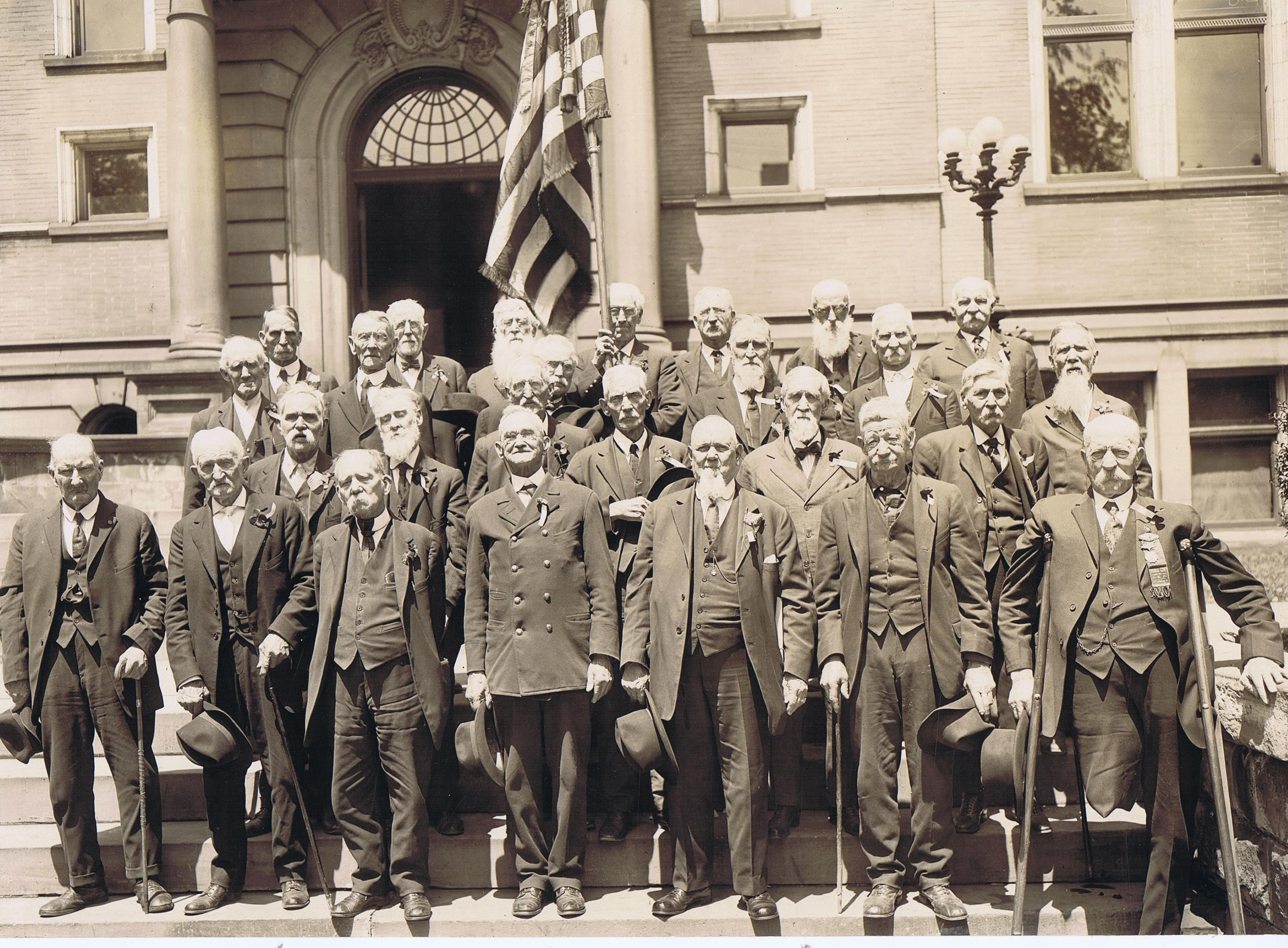
May 28, 1923
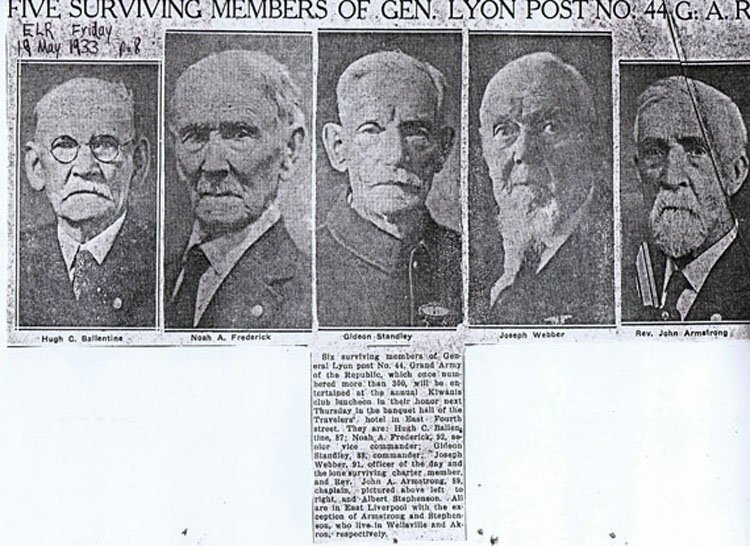
May 19, 1933
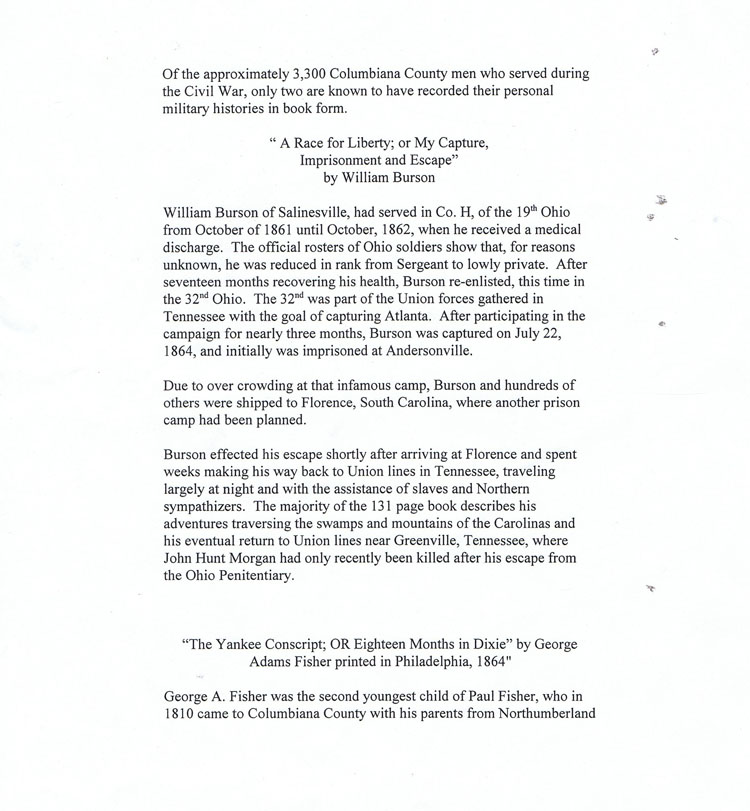
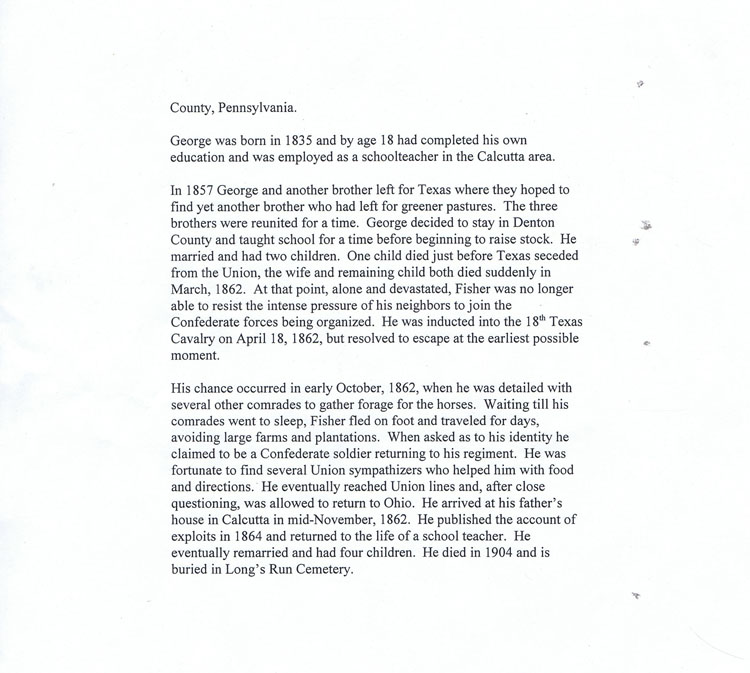
PERSONAL STORIES
Paul Hobbs on Military Memories East Liverpool & Tri-state area. Those who served, their December 29, 2013 wrote:
My Great Great Uncle Samuel Kerr of Hookstown. Mortally wounded at the Battle of Cumberland Church, Va. two days before Lee Surrendered. His unit's actions were instrumental in Lee's Surrender as Lee, Longstreet et al were all at Cumberland Church.
April 9, resumed march in pursuit of the enemy. By direction of the division commander a regiment (Fifth New Hampshire Volunteers) was sent out on either flank to forage upon the country. 11 .m. the One hundred and fortieth Pennsylvania Volunteers, being in advance as skirmishers, came upon the enemy’s pickets. The command was here halted and formed in a line awaiting negotiation between the two armies, affecting a surrender of the rebel force. 2 p.m., again advanced a short distance, were again halted; here the Sixty-first New York were also deployed as skirmishers, and the Twenty-sixth Michigan as flankers. The Fifth New Hampshire Volunteers now rejoined the column, bring in about thirty prisoners and a few broken down mules, horses &c. 4 p.m., news of the surrender of Lee’s army was now received. This welcome intelligence was received by the troops amid acclimations of the wildest excitement and most intense joy. The men who compose this Nobel old veteran brigade may well be proud of the part taken by them in this as well as in each and all of the campaigns of the Army of the Potomac. Our successes have cost us the loss of many good soldiers, officers and men. Prominent among the many brave, we mourn the loss of Capt. I. H. Boyd, Brigade Inspector, killed upon the 7th instant. On the same day were wounded Captains Ricker, Fifth New Hampshire Volunteers, and Kerr, One hundred and fortieth Pennsylvania Volunteers, acting aides-de-camp. These two officers were particularly distinguishable at all times for their gallantry in action.
The entire loss of the brigade during this short and decisive campaign will number in all about 650. 5 p.mp, assembled the skirmish line, forming a picked-line covering the division front and left flank. Remained in this position during the night.
I am, colonel, very respectfully, your obedient servant. Geo. W. Scott, Colonel, Commanding Brigade 1From The War of The Rebellion: A compilation of the Official Records of the Union and Confederate Armies Series I - Volume XLVI Part I Reports. Government Printing Office 1894.
“April 10, My troops, without exception, behaved well, standing firm under the attack of the enemy, and advancing fearlessly to the charge. Too much praise cannot be awarded to the detachment of the Sixty-first New York Volunteers—men and officers distinguished themselves. The officers of my staff, Captains McCallister and Kerr, of the One hundred and fortieth Pennsylvania Volunteers, and Lieutenant Hickock Twenty-sixth Michigan Volunteers, were very efficient at all times, gallant in action, and faithful to the performance of all duty. Lieutenant Hickock being twice struck by the enemy’s bullets. Accompanying is a list of casualties. I am , Very respectfully, George W. Scott, Colonel, Commanding Brigade”1.
Notification of death: Brig Gen’l L Thomas Adjt Genl U. S. A[rmy] Washington, DC
U. S. Army General Hospital Annapolis Md May 4th 1865. General, I have to report that Capt. Samuel S. Kerr of Company H 140 Regiment Penna Vols. Died in, this general Hospital, May 3/65 of G. S Wound lower 3” left leg. [The 3” meant 3rd as indicated by other use of the “] Inventory of Effects enclosed. Very Respectfully, Your obedient Servant, (signature illegible - possibly William S. Ely) Surgeon U. S. vols Act. In Charge
K 140 Pa, S. S. Kerr, Capt, 140th Pa. vols Appears on General Order No 65, dated War Department, adjutant General’s Office, June 22, 1867. Appointed to be Major BY BREVET in the Volunteer Force, Army of the United States for conspicuous gallantry in the engagement with the insurgent army of Northern Virginia of April 7, 1865.
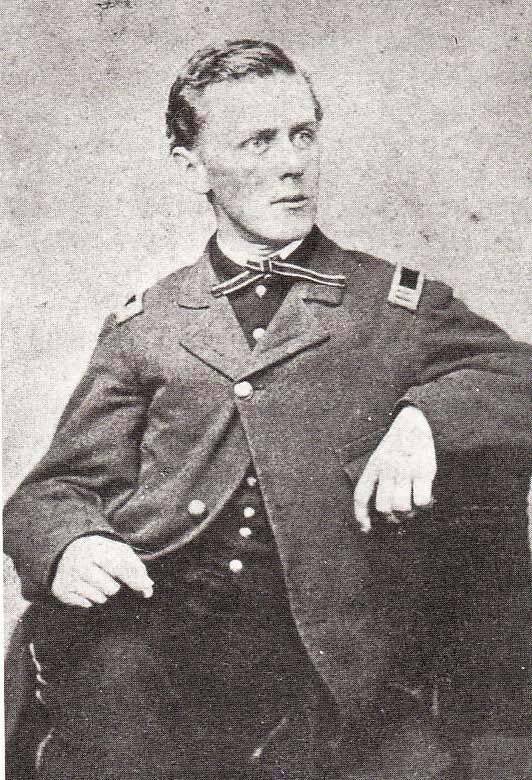
Company E, 8th Regiment, Ohio National Guard Strike Duty
http://www.eastliverpoolhistoricalsociety.org/ONGComanyE,8thReg.Strikeduty.htm
SPANISH AMERICAN WAR
Both in the Spanish-American and the World War a company was raised in East Liverpool. On both occasions it was known as “Company E.” Both were in charge of Capt. M. W. Hill, he leading both contingents out of the city after an interval of nearly twenty years. The 1898 company became a member of the Eighth Regiment, Ohio National Guard, known as “The President’s Own.” The first and second lieutenants were George O. Anderson and Robert T. Hall, respectively.
On April 25, 1898 the Company left East Liverpool for the regimental headquarters at Wooster, Ohio and its members were mustered into the United States service at Columbus on May 13 of that year. The regiment reached Camp Alger, Va., two days later. On July 7 the regiment left New York on the transport, “St. Paul” and landed at Siboney, Cuba, on July 10. General Shafter sent it to the trenches and guard duty. Sickness seized the majority of the Company E. men. Those able to do so left on August 18 for Montauk Point, Long Island, N. Y., where they landed on August 24. They entrained for Wooster on September 24 and were mustered out of service on Nov. 21, 1898.
Two-thirds of the members of the company were physically disabled for a long period and several never entirely recovered from the ravages of disease which the Cuban climate inflicted upon them. The immediate casualties included Francis Smith, who died at Siboney, Cuba, on Aug. 20, 1898; O. J. Eddy, who succumbed at sea two days later; Charles Sweitzer who passed away in East Liverpool from illness contracted on the island; Michael Eck, who passed away at Montauk Point on Sept. 3, 1898 and Edward Holloway, who expired at the same place on Sept. 15, 1898. On Nov. 10, 1900, Arthur Burrows, who had previously re-enlisted was mortally wounded in action in the Phillipines. SOURCE: Chapter XXV - In the Wars of the Nation History of Columbiana County, Ohio Vol. I ~ Harold B. Barth 1926
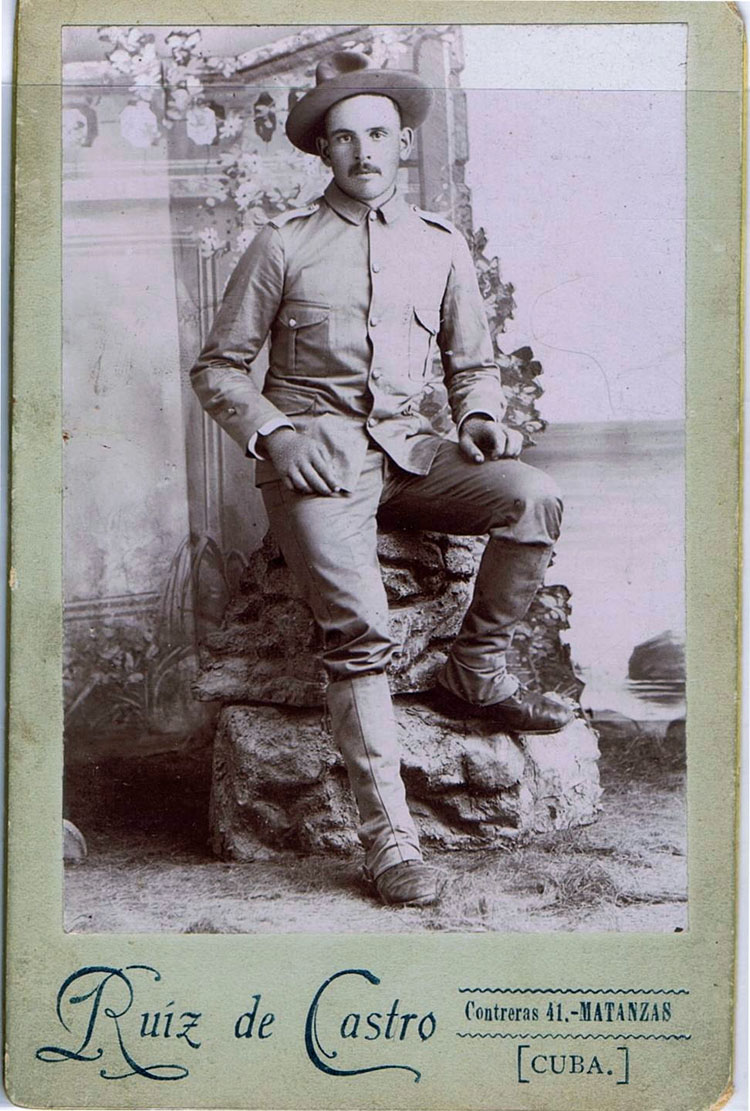
Typical Spanish American War Uniform Charles McGreger From Mansfield, Richland County, Ohio
East Liverpool and the "Splendid Little War"
http://www.eastliverpoolhistoricalsociety.org/litwar.htm
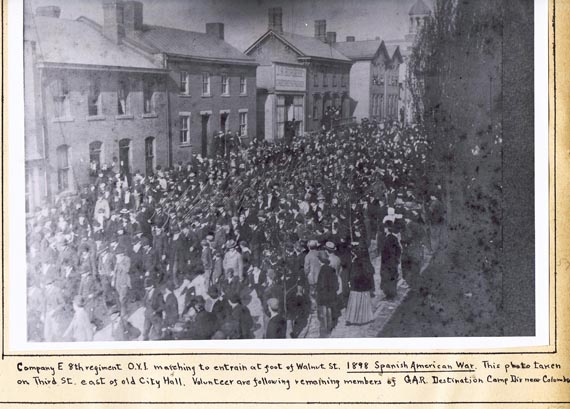

Company E, 8th Regiment, marching to entrain at the foot of Walnut St. 1898 Spanish-American War.
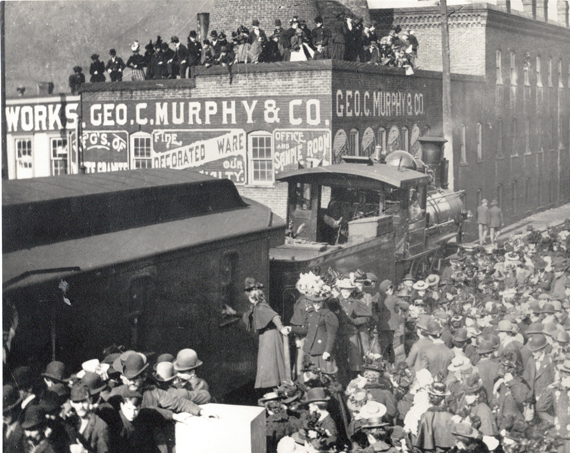
Co. E. Leaving for Spanish-American War from glass plate taken by Harry Webb. April 25, 1898.
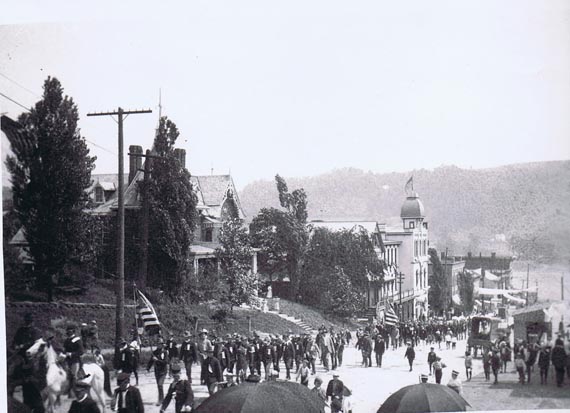
Return of Company E. O.V.I. after Spanish American War. Date about Aug. 15, 1898. Dale Thompson Collection.
WORLD WAR I
It was another “Company E” that was formed in East Liverpool during the weeks immediately following the April declaration of war against Germany in 1917. It became a part of the Tenth Ohio Infantry of the State National Guard which was commanded by Col. W. C. Weybrecht, of Alliance. Recruiting was carried on in the Y. M. C. A. Building on Fourth and Washington streets and in its banquet room the soldiers daily messed after it had been assembled. Headquarters were maintained across the street in the second floor of the Moose Building. Drilling was done in various plots about the city and at Newell, W. Va.
Though in the service for months the Company was preceded to camp by twenty-three East Liverpool, Wellsville, Hanoverton and Lisbon young men who as five per cent of the initial draft contingent went to Camp Sherman on Thursday, Sept. 7, 1917 to assist with others throughout the state for the coming to those to follow them. These pioneer soldiers were: Earl M. Clawson, Thomas Brozka, Samuel R. and Robert A. Taylor, William R. Henderson, E. E. Shenkel, Ernest A. Puron, Charles Hart, George Albert Patterson, Allan George, Robert Guyton, William Roush, John T. Burns, Frank M. Hill, John E. Canavan and William V. Duffy of East Liverpool; John H. Grafton and Jacob Bowers of Wellsville; John C. Tate, F. C. Sinclair and Wilfred A. Ballen of Hanoverton and Earl C. Apple and C. P. Deemer of Lisbon.
The night preceding their departure receptions were tendered the various members of the detachment at the Y. M. C. A., K. of C., and Masonic halls. Crowds thronged in and about the C. & P. depot the following morning as business houses delayed opening for an hour, factory whistles blew and Attorney Jason Brookes made an address while awaiting the west bound 8:10 o’clock train for Steubenville. Many of these young men later became commissioned and non-commissioned officers of what later became Co. L of the 332nd Regiment of the 83rd Division, which the commander, General Glenn, in the summer of 1918 took to France.
Commanded by Col. William Wallace, of Indianapolis, Ind., the 332 regiment was detached and served as a separate and disunit in Italy, where it took part in the Piave River battle against the Austrians. Later the regiment did garrison duty.
It returned to America in the Spring of 1919. Company L arrived on the Steamer Dante Alighteri which reached New York on April 18. The men were taken to Camp Merritt, N. J., and with others of the regiment participated in the great Parades in New York City on April 21 and in Cleveland on April 26. From Ohio’s metropolis the men were taken to Camp Sherman at Chillicothe, Ohio, from where they were mustered out of service.
On Sunday morning, September 10, with the entire city seemingly present with many from various county points adding to the number, Company E. entrained for Camp Sheridan at Montgomery, Ala. As he had done two decades before, Captain Hill led the detachment down Broadway, following a parade of the main streets of the city, to the C. & P. station. His first lieutenant was Richard Smith and the second, Allan Surles, both local young men, popular and well known. Music was dispensed by the Ceramic City Band. A big reception was tendered the departing men on Saturday night at the Y. M. C. A. gymnasium at which Eugene H. Bradshaw, the city’s safety director and president of the National Defense Organization was master of ceremonies. A feature of the affair was the appearance in Scotch kilties of Adam MacGregor, a convalescent wounded soldier of the ill-fated Dardanelles campaign, who sang numerous Scottish songs.
At Camp Sheridan “Company E” became “Company D” of the 135th Machine Gun Battalion of the 37th Division. As such it reached France in the summer of 1918. Meanwhile Captain Hill had been invalided home and Lieutenant Smith returned to his home here. Lieuts. Millard Blythe and Lester McNicol, both East Liverpool young men, had been attached to the contingent.
The men fought in the Argonne Forest and were fighting in Belgium when hostilities ceased on Nov. 11, 1918. On Sept 26, in the Argonne an exploding shell snuffed out the lives of Sergeant Charles C. Cox, veteran of the Spanish-American War, and Privates Cecil A. Eardley, Howard J. Purinton, Sylvester, Bierry, Walter Wasson and John Vaughn. On November 4, a week before the armistice, Daniel Duty, of Wellsville and Harry Heckathorne were fatally wounded in action on the Escant River in Belgium. Sergeant Herman Tuerck succumbed to illness at Hoboken, N. J., on March 31, 1919, following his arrival after the return trip on the George Washington.
The surviving members of the old Company E, after returning as Company D, were permitted to spend April 3, 1919 in East Liverpool while en route from New York to Camp Sherman at Chillicothe, Ohio, following their return to this country. The event furnished one of the red-letter days in East Liverpool of the entire World War period. Thousands met them at the C. & P. depot at 8:20 o’clock that morning. Officially greeting them were Major J. S. Wilson and the day’s chairman, Attorney W. H. Vodrey. Frank Robinson, assisted by David McLean and Will T. Blake, was the Marshall of the parade.
Though the men were in direct command of Lieut. William R. Atkinson, of Dayton, Ohio, he gracefully permitted Lieut. Allan Surles, now promoted to battalion adjutant, the third officer in rank when the men went away on the drab September morning of more than a year previously, to lead the men with Lieut. Lester McNicol up Broadway to the Y. M. C. A., where dinner was served them by the East Liverpool Red Cross, under the immediate supervision of Miss Sara Simms.
After the repast the men paraded the main thoroughfares of the city. It was headed by Police Chief Hugh McDermott and a platoon of six of his men. In it were the Ceramic City and High School bands and the East Liverpool Drum Corps., Mayor Wilson and Chairman Vodrey, the Civil War veterans, those of Foreign Wars and the preceding ones of the World War under Lieuts. Robert Brooks and John T. Burns.
After another meal at the Y. M. C. A. the men were that evening escorted to the C. & P. station where they entrained for the final leg of their journey to Camp Sherman. There they were in a few days mustered out of service. SOURCE: Chapter XXV - In the Wars of the Nation History of Columbiana County, Ohio Vol. I ~ Harold B. Barth 1926
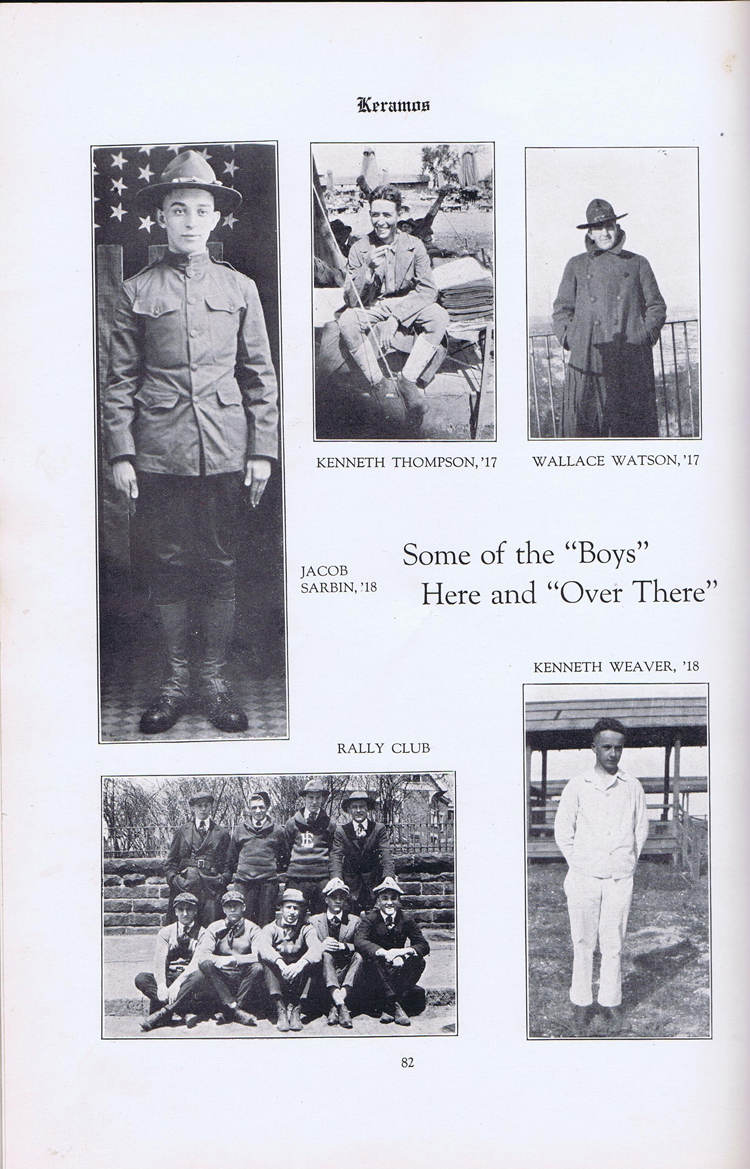
1918 East Liverpool High School Yearbook, Keramos. Ironic that Kenneth Thompson is among those on this page.
The following comes for a 6 part series titled "Two High School Graduates, 1912, 100 years ago and our town in their time." This particular section is the latter part of Part 5.
The Story of Kenneth Thompson.
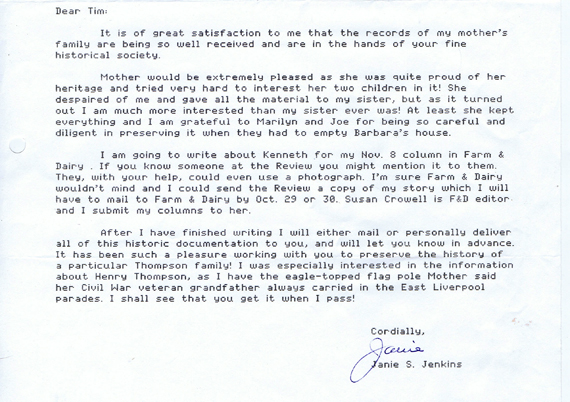
Letter from Janie S. Jenkins to Tim Brookes, September 27, 2007.
Kenneth Thompson was Berenice's Youngest Brother.
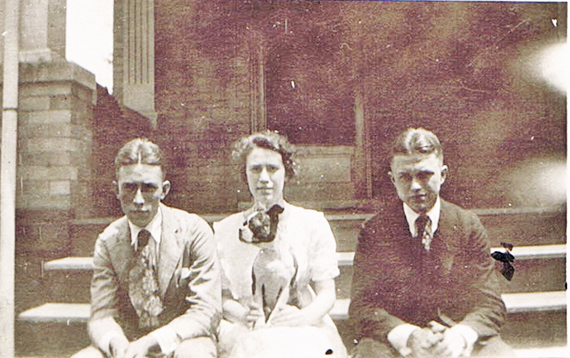
Kenneth, Berenice, Joe Thompson on the steps of the Thompson House on St Clair Ave.
Thursday, November 8, 2007
A WWI hero’s life remembered
by Janie Jenkins
From Washington D.C., the telegram is addressed to Mr. Harry Thompson, St. Clair Avenue, East Liverpool, Ohio.
Yellowed and fragile, it is dated Aug. 18, 1918.
The sender is “P.C. Harris Acting AJE GENL.”
Its message is as haunting today as it was then, when some 4 million men and boys from across the United States were serving abroad in World War I, hailed as The War to End All Wars. It had begun April 6, 1917.
The war ended Nov. 11, 1918, on what now is celebrated as Veterans’ Day. Known until 1954 as Armistice Day, that date is a federal legal holiday in every state, somberly celebrated by a population that has seen far too many more wars since that one that did not end all wars.
Official news. What was the message personally delivered to Harry Thompson and his family on that August day, just three months before the end of the war?
“Deeply regret to inform you that it is officially reported that Sergeant Kenneth H. Thompson, Infantry, died August nineth (sic) of wounds received in action.”
He was one of 53,513 battle deaths by the end of the war.
Kenneth was the uncle I never knew. Most notably, he was the first East Liverpool and Columbiana County soldier to die in WWI.
In fact, he was the second. Another EL resident was killed in action a day or two earlier but information about Kenneth's death arrived in ELO first. Thus the paper stated he was the first killed in action from ELO. - ELHS Webmaster
Painful memories. His sister, my mother, Berenice Thompson Steinfeld, never spoke of her baby brother and long ago wrote in a letter to my sister that “to this day I cannot mention his name.”
Nor did she ever disclose, at least to me, that while emptying my grandfather’s house after his death, she found letters from Kenneth, a piece of shirt material bearing his sergeant’s stripe, the crossed rifle insignia of the 58th Infantry, plus another square of shirt material with four embroidered stars around the Roman numeral IV, representing the Fourth Infantry.
Also saved were the official proclamations of his appointments to corporal and then to sergeant, and the final proclamation from the Army certifying that Kenneth H. Thompson “died with honor in the service of his country.”
It was signed on Nov. 21, 1918, just nine days after the Armistice.
Newly discovered. These historic treasures came to light only when my sister’s home had to be emptied following her irreversible stroke on Thanksgiving Day 2006. I never knew they existed, as our mother never mentioned anything about Kenneth.
Kenneth was only 18 when, according to a letter from P.C. Harris, AGO, dated Oct. 23, 1919, he "was admitted to Evacuation Hospital No. 3, Aug. 7, 1918, on account of gun shot wound. The following day he underwent an operation, dying at 11:18 a.m. from gas gangrene following the operation."
http://en.wikipedia.org/wiki/Gas_gangrene
The entire article, that the above excerpt comes from, can be read here though I think it may be a slightly different version.
http://www.farmanddairy.com/columns/a-wwi-heros-life-remembered/7633.html
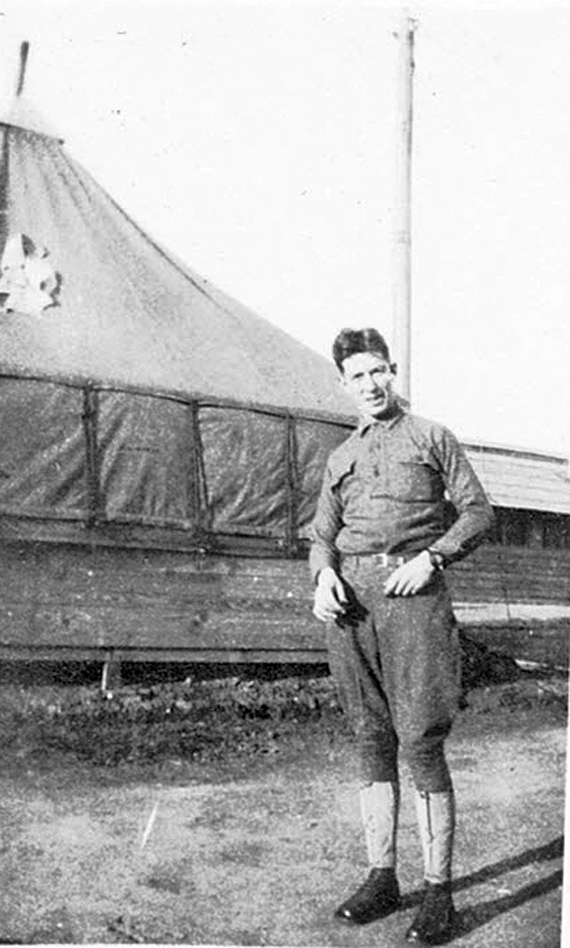
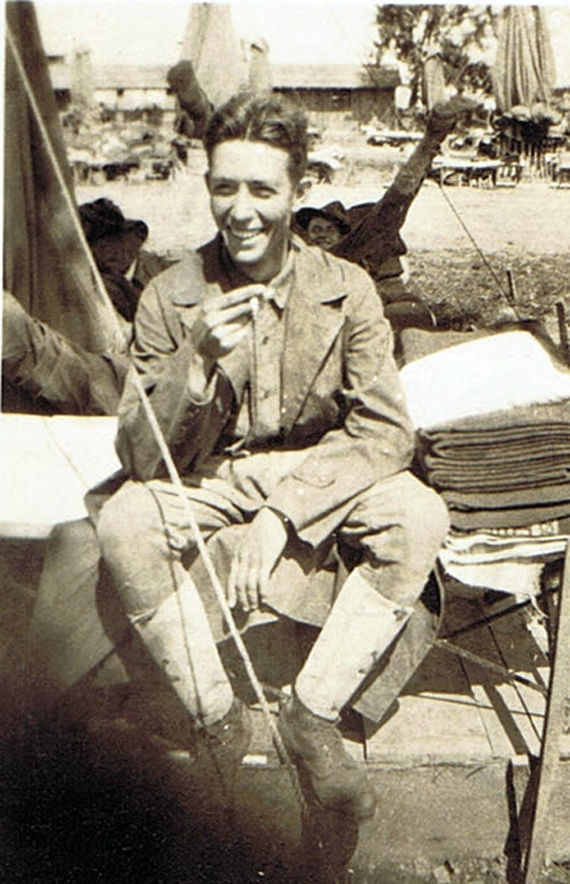
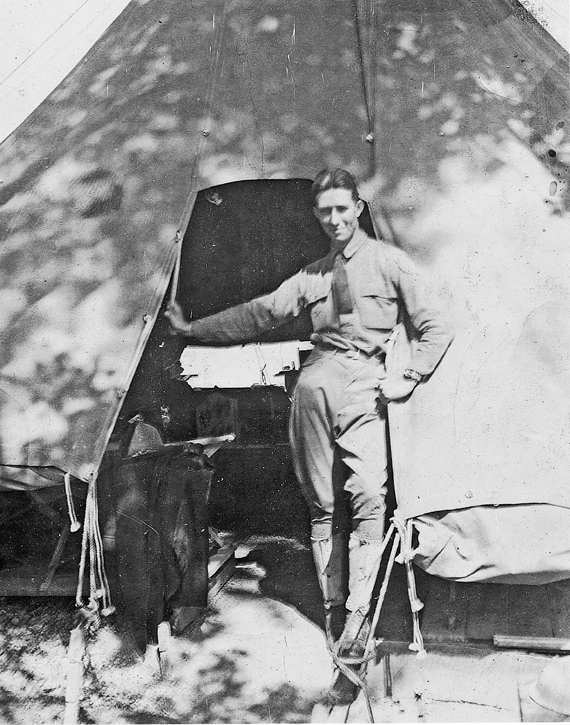
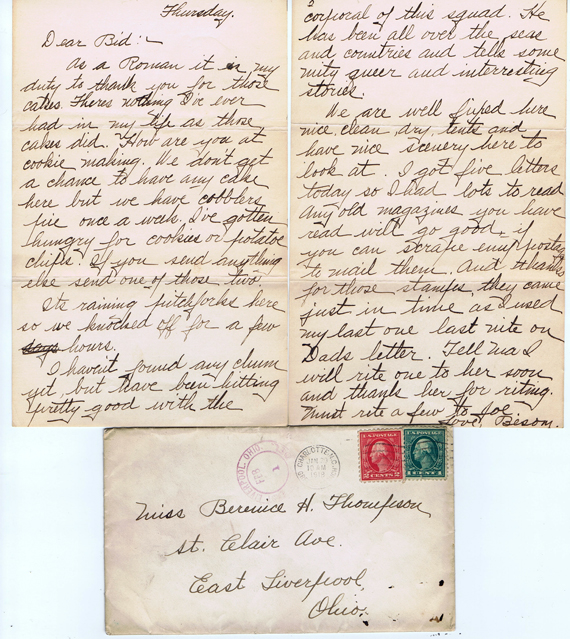
Letter from Kenneth Thompson to his Sister, Berenice.
Two High School Graduates, 1912, 100 years ago and our town in their time 6.
The story of Kenneth Thompson continues in the first part of Part 6 for those who are interested in the rest of the story. Click on the above url to read the rest of his story.


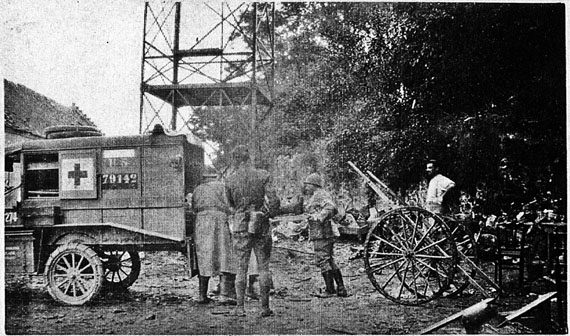
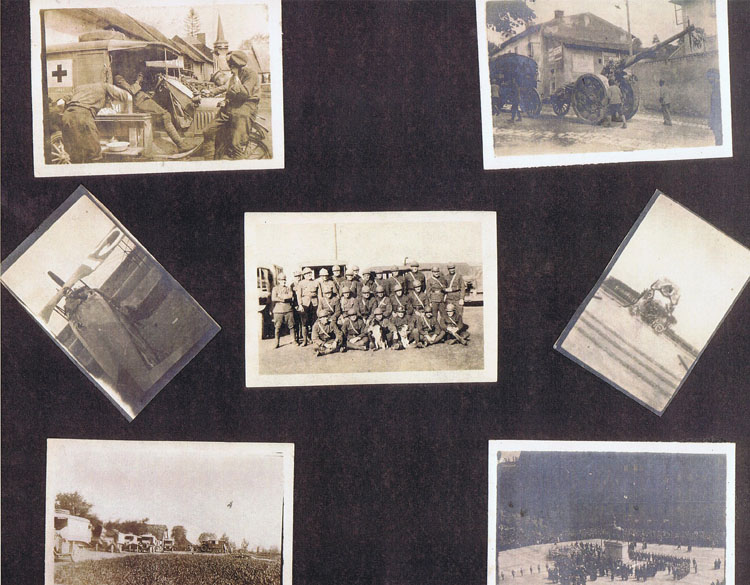
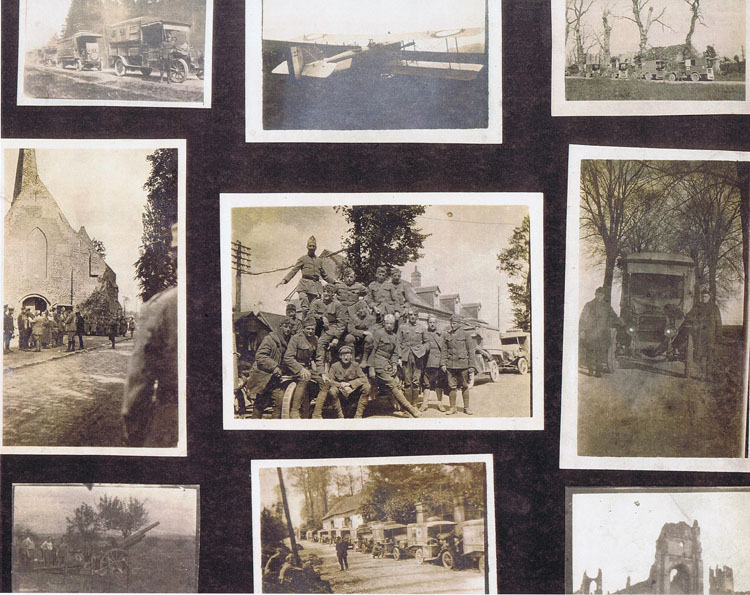
CONTINUE TO Our Military Heritage 3
This site is the property of the East Liverpool Historical Society.
Regular linking, i.e. providing the URL of the East Liverpool Historical Society web site for viewers to click on and be taken to the East Liverpool Historical Society entry portal or to any specific article on the website is legally permitted.
Hyperlinking, or as it is also called framing, without permission is not permitted.
Legally speaking framing is still in a murky area of the law though there have been court cases in which framing has been seen as violation of copyright law. Many cases that were taken to court ended up settling out-of-court with the one doing the framing agreeing to cease framing and to just use a regular link to the other site.
The East Liverpool Historical Society pays fees to keep their site online. A person framing the Society site is effectively presenting the entire East Liverpool Historical Society web site as his own site and doing it at no cost to himself, i.e. stealing the site.
The East Liverpool Historical Society reserves the right to charge such an individual a fee for the use of the Society’s material.